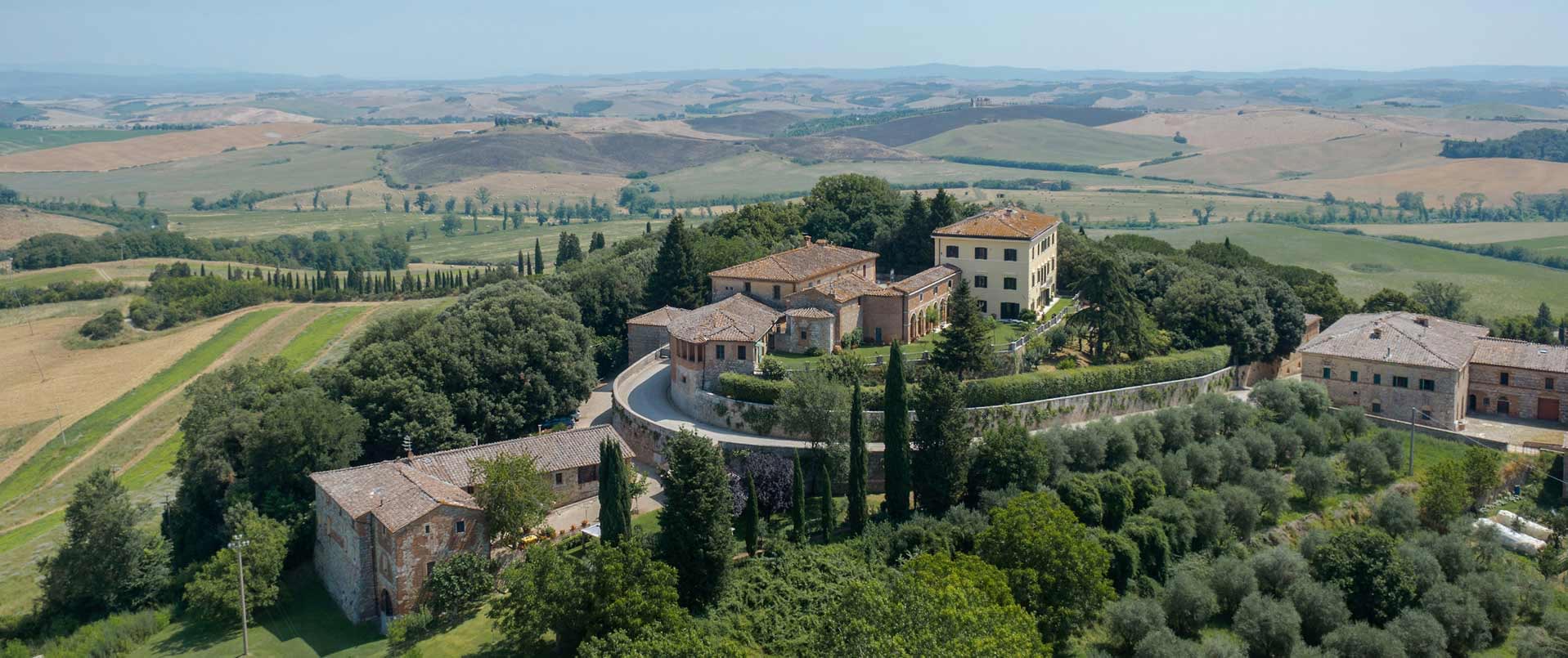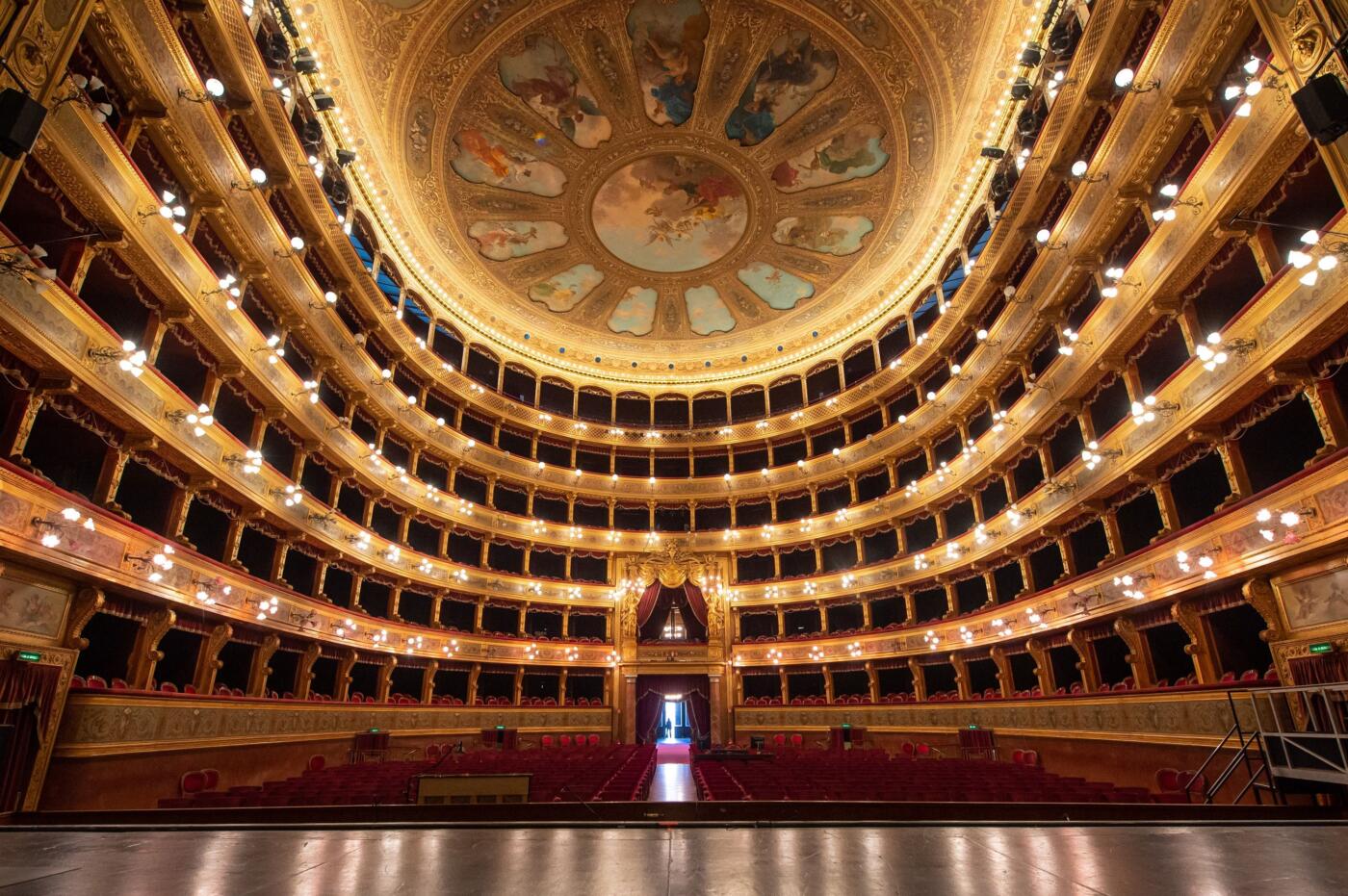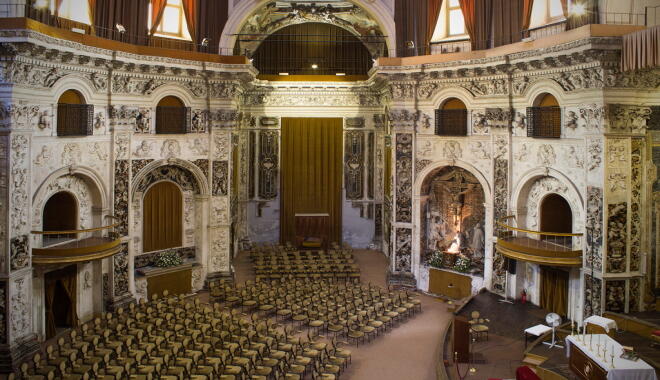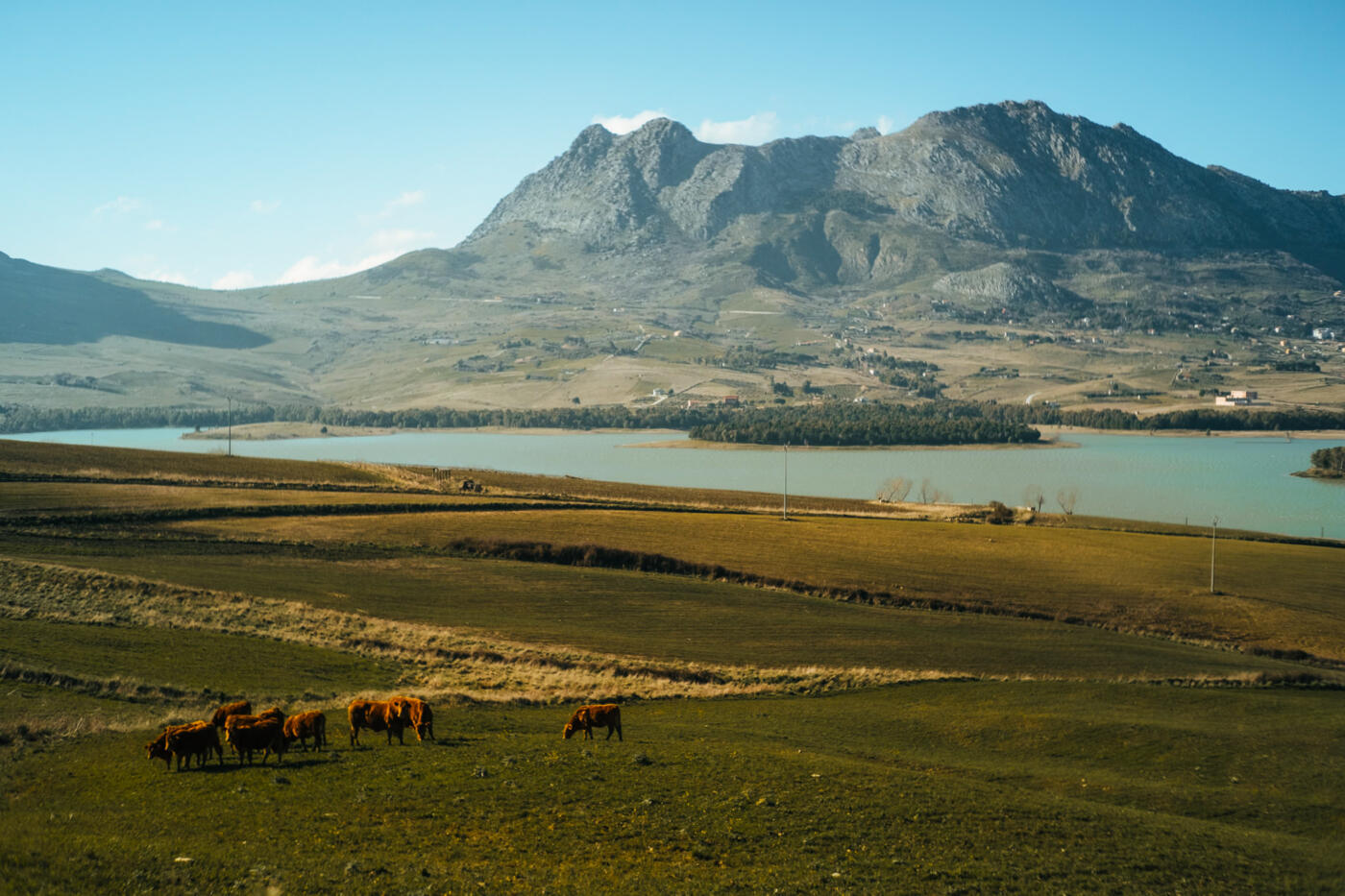
Palermo is a city undergoing constant change, which is currently experiencing a true cultural and social renaissance. Vogue recently highlighted the Sicilian capital’s revival in a feature that underlined the “creative energy of local and international artists, designers and visionary entrepreneurs” who are “fearlessly propelling it into the future”. This resurgence is a progression of Palermo’s rich history and artistic heritage, which have made it the undisputed hub of the Mediterranean Sea. The natural predisposition of its inhabitants to embrace the influences of diverse cultural civilisations and populations has enabled it to consistently evolve through the ages.
Palermo’s appeal is also reflected in the investments made by a number of international hotel groups. In 2021, Rocco Forte acquired the luxury Villa Igiea hotel, once owned by the Florio family and decorated by the greatest Art Nouveau artists of the time. Another recent development is the addition of the iconic Grand Hotel et Des Palmes to Mangia’s portfolio.
This classical and cultural richness is also evident in a gastronomic heritage that has continued to evolve over the centuries. Historically, Palermo has a deep, almost sacred relationship with food, explaining why its time-honoured markets are still the bustling heart of the city. The Capo market is a perfect example of the way market traders have managed to preserve an intricate maze of alleys or ‘viuzze’ reminiscent of the Arab era. The picturesque Ballarò market stretches from Piazza Casa Professa to the bastions of Corso Tukory. Last but not least is the Vucciria meat market, formerly known as Buccerìa (taken from the French word ‘boucherie’, or ‘butcher’s shop’, and also synonymous with the sound of lively crowds chatting). All the top restaurants, including the Michelin-starred Mec and Gagini, as well as I Pupi and Limu in nearby Bagheria, source their flavours from these vibrant marketplaces.

So where do we begin?
The only access to the historic centre from the sea is by passing through the majestic Porta Felice gate. Crossing Piazza del Cavalluccio Marino and walking along Via Butera, we arrive at the first historical residence on our itinerary: namely, Palazzo Lanza Tomasi, the last home of Prince Giuseppe Tomasi di Lampedusa, author of ‘Il Gattopardo’ (‘The Leopard’). This Palazzo now serves as the house of remembrance or ‘Casa della Memoria’ for the Tomasi di Lampedusa family. The main ‘piano nobile’ floor displays documents and furnishings from the destroyed Palazzo Lampedusa, and the tours, personally guided by Donna Nicoletta Lanza Tomasi, also include the Prince’s legendary library and all his manuscripts. It is also possible to book accommodation in the Butera 28 Apartments, which are fully equipped and largely furnished with antique pieces. In addition, guests can participate in a unique Sicilian culinary experience organised by the Duchess herself, aptly described as ‘A Day Cooking with the Duchess’. This cooking class begins with a visit to the Capo market to buy ingredients and continues with the preparation of a complete menu in the Palazzo’s kitchen. The session concludes with lunch and a visit to the ‘piano nobile’ rooms, which were lovingly restored by Don Gioacchino Lanza Tomasi in the 1960s and 1970s.
What makes Palermo truly exceptional is the possibility of being able to walk between different monuments and artistic and cultural sites within just a few hundred metres of each other.
For our walk leading us to Palazzo Alliata di Pietratagliata, we start with a visit to Palazzo Butera, the former residence of the Princes of Butera, now a contemporary house-museum that hosts the Valsecchi family’s splendid collection, which has been restored “with the intention of making the monumental property accessible to the public”.
From nearby Via Alloro, you can access the Regional Gallery of Palermo located in Palazzo Abatellis, which was curated by Carlo Scarpa. It houses masterpieces such as Antonello da Messina’s ‘Annunziata’ and the ‘Triumph of Death’. A little further down the road, you will find the glorious church of La Gancia. On your way to Via Vittorio Emanuele, the busiest and oldest street of Palermo, previously called the Cassaro, take a break at Piazza Marina under the shade of one of the enormous ficus macrophylla fig trees and then enter Palazzo Chiaromonte-Steri. This historical building, once the seat of the Spanish Inquisition, spans seven centuries of history and displays graffiti etched on the cell walls by prison inmates of that infamous tribunal as well as the much-appreciated 20th-century painting “La Vucciria” by Renato Guttuso.

Today, it houses the University of Palermo.
A ten-minute walk through the ancient market depicted by Guttuso, pausing perhaps for a taste of the typical Palermitan street food, and you will arrive at Piazza San Domenico and its namesake church. Recognised as the resting place of distinguished Sicilians from the mid-19th century onwards, the Pantheon contains the tombs of Giovanni Falcone and Giuseppe Tomasi di Lampedusa. From there, crossing Via Roma, you will arrive at our next stop, Palazzo Alliata di Pietratagliata.
Since its construction in 1473, Palazzo Alliata di Pietratagliata has been a testament to five centuries of history, evident in its architectural and decorative aspects. It features a 15th-century crenellated tower, Rococo interiors, the largest Murano chandelier ever created, dating back to the 18th century, and Neo-Gothic decorations by illustrious 20th-century architects Ernesto Basile and Vincenzo Palazzotto. Open to the public, the Palazzo hosts prestigious events, conferences and ceremonies. It also offers a unique opportunity for experiencing Palermitan hospitality in a historical residence, with accommodation in the form of an apartment comprising two bedrooms, two bathrooms, a kitchen, a dining room, a living room and an entrance hall.
Our tour continues with a visit of some of the most famous sites in the historic centre of the city.
Five minutes further away, along Via Roma, is the renowned Antonino Salinas Archaeological Museum. From there, take Via Bara all’Olivella to reach the Teatro Massimo, the third-largest theatre in Europe, a grand neo-classical building positioned on a square that was formerly the site of churches and convents. To the right of today’s Piazza Verdi begins another important street, Via Maqueda, which conducts us to the very heart of the historic capital: the octagonal Quattro Canti or Piazza Vigliena, also known as the ‘Ottagono del Sole’. Each corner of this ‘octagon of the sun’ square features three different styles of architecture, showcasing statues of the Seasons, the four Spanish kings and the patron saints of each district. Just close by are the baroque churches of San Giuseppe dei Teatini and Santa Caterina, adorned with different colours and types of marble, the Norman-founded churches of San Cataldo and Martorana, and the mannerist fountain of Piazza Pretoria, which Viceroy Garcia di Toledo commissioned to “further embellish our beautiful city”.

Continuing along Via Vittorio Emanuele with the sea behind us, you will walk pass the theatrical church of Santissimo Salvatore, with its elliptical layout, and reach the Palermitan temple, the Cathedral, where the porphyry stone tombs of Roger I, Constance the Norman and Frederick II are preserved. Proceed to Palazzo dei Normanni, the Royal Palace, built by the Arabs around the 10th century and subsequently chosen by the Norman kings as their luxurious residence and fortress. It includes the magnificent Palatine Chapel and, perched atop the Pisana Tower constructed by Roger II, the Astronomical Observatory of Palermo. Just a 5-minute walk from the Royal Palace, you absolutely must not miss the ancient former monastery of San Giovanni degli Eremiti (St. John of the Hermits), a medieval church built in the Norman era, with its distinctive red domes and charming cloister.
Exiting Porta Nuova, Via Vittorio Emanuele continues along Corso Calatafimi in the direction of Monreale. Just the other side of the motorway thoroughfare, you will arrive at our third residence on this Palermitan tour, Villa Tasca. Set within an 8-hectare park, the Villa has captivated the many celebrities and notable visitors who have stayed there over the centuries, including composer Richard Wagner, who composed the third act of one of his masterpieces, Parsifal, here, and writer and poet Johann Wolfgang von Goethe. When you visit this residence, you will have the opportunity of strolling through its monumental gardens, an icon of 19th-century Sicilian Romanticism, and exploring the rooms on the main ‘piano nobile’ floor. An added bonus is that the Villa also offers unforgettable overnight stays, accommodating up to eight people.
Like everywhere in Sicily, Palermo is justifiably reputed for its sea and beaches. Why not take a day off to relax at Palermo’s beach, Mondello? The area is accessible by crossing the Favorita Park, at the foot of Monte Pellegrino, described by Goethe as “the most beautiful promontory in the world” during his stay in Sicily. Nestled between Monte Pellegrino and Capo Gallo, Mondello beach was once a fishing village before being transformed into a seaside resort at the end of the 19th century. This captivating spot is characterised by numerous Art Nouveau villas and the former Charleston Bathing Establishment, an elegant structure built at the waterside in 1910 by the Italo-Belgian Society.

To return to the city centre from Mondello, you will drive through the Piana dei Colli, an area where aristocrats and wealthy bourgeois began to establish residences in the 18th century, attracted by its fashionable appeal, the expansive estates, scenic views and close proximity to nature.
The fourth residence on our Sicilian itinerary is Villa Alliata Cardillo, an 18th-century ‘baglio’, a type of fortified farmhouse, which was transformed into a residential villa by Marquis Domenico Cardillo. Today, the Villa hosts the Piana dei Colli Arts Centre. The former stables are used as an events hall, and the garden, which is the residence’s crown jewel, can accommodate ceremonies and events for up to a thousand guests.
Before concluding your adventure here, it is really worth your while taking the car and escaping from the centre and its proverbial busy traffic by driving up into the mountains of Piana dei Greci, renamed Piana degli Albanesi in 1941.
In the midst of this enchanting setting of valleys and mountains, you will come upon another delightful residence, Masseria Rossella, a charming ‘agriturismo’ with a swimming pool located in the Scanzano valley. This Masseria is regarded as a one-of-a-kind property in the area due to its prestige, impressive design and noble origins. Its restaurant offers a refined take on traditional Sicilian cuisine.
From here, you can easily explore other itineraries, such as the route leading to the Valley of the Temples in Agrigento. In the meantime, sit back and enjoy the mountain air and all the authentic flavours of Sicily.